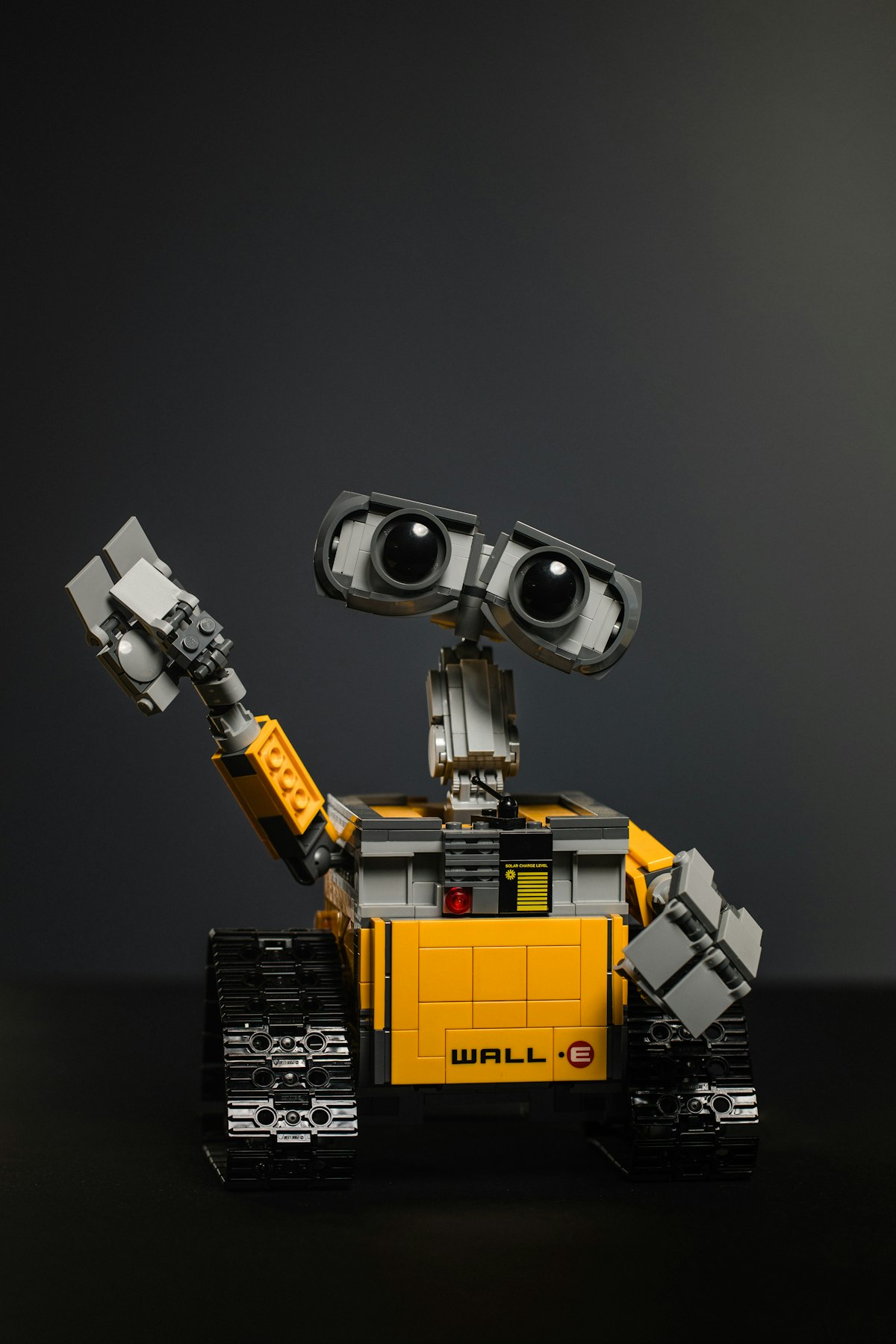I want my son to start learning robotics, even if he's still in diapers. But I don't know much if anything about robots, programming, or really, where exactly to start.
Here are 12 ways I've found so far in my figuring-this-out journey:
First, a quick intro to robotics
Robots have the potential to greatly improve the education of young children and are now ubiquitous in our culture. The incorporation of programmable robots into Early Childhood Education (ECE) aims to increase children's basic understanding of artificial intelligence (AI), machine learning (ML), computer science (CS), and robotics through the introduction of programming and computational thinking abilities.
However, incorporating robots into early childhood classes is not without its difficulties, including instructors' inexperience with robotics, a lack of time for preparation, and a lack of suitable tasks for the robot.
In spite of these obstacles, robots can offer a novel approach to education by involving youngsters in interactive activities that foster the development of problem-solving abilities.
Believe it or not, robots can also teach kids important soft skills like teamwork and communication.
Second: These 2 key advantages that robotics provide for young learners

1. Less screentime is always a good thing for kids, right? Without having to spend excessive time in front of a screen, kids may gain exposure to and practice the fundamentals of coding. In its place, they are urged to actively seek out issues and provide creative solutions. With its user-friendly platform for coding and robotics, which can be readily incorporated into preexisting curriculum or classroom projects, robotics in early childhood education offers several advantages.
It is crucial to give kids age- and developmentally-appropriate hands-on activities while introducing robotics in the classroom. Because physically coded robots have their own coding approach that does not require a screen or device, kids who use them need to comprehend less and perform less work than kids who use other ways of coding.
2. They get the realtime feedback they need to succeed. Robotics is an excellent tool for teaching skills related to problem-solving, computational thinking, cooperation, creativity, communication, and critical thinking, and it also makes coding more tangible and real for students by allowing them to understand how their code impacts the actual world.
Numerous studies have demonstrated that children's exposure to robotics can have a beneficial influence on their cognitive growth, task engagement, and sequencing ability. For example: Parents of children who participated in an 8-week robotics curriculum reported increased interest in STEM topics and improved problem-solving skills (Sullivan and Bers, 2015).
Now: 12 constuctive ways that children can play with robots
Creating a robot costume for pretend play
Using magnetic robots
Participating in robot STEM activities
Playing hide-and-seek, solving mazes, and racing the robots
Building and creating robots to promote imagination, creativity, and problem solving skills
Using Linkbots, which are modular and customizable machines that can be assembled into a variety of different robot types
Participating in interactive activities with Play-i robots Bo and Yana, which have distinct educational roles
Utilizing RobotsLAB's mini humanoid NAO and two-wheeled Qbo series of educational robots
Programming EZ-Robot's open source software and hardware platform to craft new robots or share creations with other users
Investing in specialist toys such as Cozmo or enrolling children on robotics courses during the summer holidays
Watching TV shows or movies featuring robotic characters prominently to spark interest in robotics
Using Lego Mindstorms kits or Meccano kits as segways into robotics.
1. Creating a robot costume for pretend play
Cardboard boxes, tin foil, dryer vents, window screen material, circuit boards, meters, and other household or garage items can be used to make a robot costume for pretend play. To begin, cut out the box's head and arm holes, then cover it with metallic laminate and add details like a mouth. To complete the costume, accessories such as robot helmets and engineer shirts can be worn. Finally, challenge your child to build their own robot out of household or garage items.

2. Using magnetic robots
By using magnetic robots, children can make unique creations and invent exciting stories. A youngster can use magnetic blocks to create a wide variety of robots, including the planets Mercury, Mars, Jupiter, Saturn, and Venus. Googly eyes, pipe cleaners, buttons, bottle caps, nuts, and bolts are just some of the non-magnetic materials that can be affixed to magnets with a hot glue gun. Each piece can alternatively be secured with magnets or magnetic strips. After selecting and magnetizing their parts, youngsters can arrange them on tin cans to form a robot. For even more amusement, they can invent adventures for their robots.
3. Participating in robot STEM activities
Robot-themed science, technology, engineering, and mathematics (STEM) activities abound, with options ranging from robot-themed arts and crafts to science experiments to robotics systems. Making robots using craft materials is a fun and educational way for youngsters to connect with one another while also developing essential STEM skills. Through participation in STEM activities, such as conducting experiments, children can develop a sense of competence and self-assurance as well as an enhanced capacity for imaginative thought. Kindergarten pupils can develop their capacity for abstract and sequential thought by participating in hands-on problem-solving exercises made possible by robotics systems. Making robots at home is also possible with the help of tools like Learn Robotics' Special Topics Robotics Course and its step-by-step robotics projects. These exercises are excellent for introducing technical subjects like robotics to students learning at home.
4. Playing hide-and-seek, solving mazes, and racing the robots
To play hide-and-seek, children can either come up with ingenious hiding places, like those found on the Hide and Seek Planet, or instruct their robots to go on the hunt for them. Children can use objects or tape to create a maze on the ground and then use a variety of strategies to find their way through it. Building a track out of household items or masking tape and pitting two or more robots against one another constitutes "robot racing."
5. Building and creating robots to promote imagination, creativity, and problem solving skills
Young students can learn the value of teamwork, critical thinking, and trial-and-error as they design, build, and test their own robots. STEM skills like creativity, innovation, critical thinking, problem solving, communication, and collaboration can be honed through robotics, and the field also affords researchers a window into how real-world creativity emerges from the interaction of students with their social environment. More than that, robotics has the potential to stimulate innovation by stimulating the mind and forcing it to work in new ways.

6. Using Linkbots, which are modular and customizable machines that can be assembled into a variety of different robot types
You can assemble different kinds of robots out of different Linkbots because they are modular and customizable machines. It has been said that their modular design is reminiscent of the development of the features of other significant robots, and that they can be used to assemble into various furniture or heavy objects. Different sized wheels are just one example of how linkbots are tailored to pique the interest of students learning math and coding in the classroom. Also, they are one of the most popular robot varieties because they can be put to work in factories with tools like CNC machines and 3D printers.
7. Participating in interactive activities with Play-i robots Bo and Yana, which have distinct educational roles
Collaborating with Play-i robots in fun, interactive games Bo and Yana can play a variety of pedagogical roles, such as storytellers who introduce kids to coding fundamentals and game hosts who facilitate activities like hide-and-seek, maze solving, and robot races. A new coding curriculum, Coding Pathways, will be implemented in 2023 and the robots can be used to investigate and monitor development in in-app puzzles, standards-aligned mathematics activities, and coding.
8. Utilizing RobotsLAB's mini humanoid NAO and two-wheeled Qbo series of educational robots
Using the NAO mini humanoid and the QBO series of two-wheeled educational robots from RobotsLab can help children learn by introducing new and appealing pedagogical topics and applying PBL (Project-Based Learning) approaches, inspiring students and increasing their interest in and knowledge of STEM skills, and aiding in the development of skills such as waitingjo. These robots have also been used in early childhood education and special education for kids with disabilities.
9. Programming EZ-Robot's open source software and hardware platform to craft new robots or share creations with other users
The open-source nature of the EZ-Robot platform's software and hardware encourages users to create and share their own unique robots. The EZ-Robot software is intended to be user-friendly and robust, and the platform supports a Scratch-like interface, GUI, Blockly, Python, JavaScript, and C++. Robots may also be programmed with the help of robot simulators.
10. Investing in specialist toys such as Cozmo or enrolling children on robotics courses during the summer holidays
In addition to offering a stress-free, homework- and test-free environment, investing in specialized toys like Cozmo or enrolling children in robotics classes during the summer holidays might be useful for fostering a child's confidence and passion in robotics. Specialist toys like Cozmo may help introduce youngsters to robotics, and robotics courses provide a unique way to learn to code by bridging the gap between the physical and digital worlds.
11. Watching TV shows or movies featuring robotic characters prominently to spark interest in robotics

Children's fascination in robotics can be sparked by watching any of a variety of shows and films featuring characters built by or based on robots. There are numerous examples of this, such as in The Backyardigans: Robot Repairman (2009), Sid the Science Kid: The Movie (2015), WALL-E (2008), Robots (2005), The Iron Giant (1999), The Star, The Hitchhiker's Guide to the Galaxy, Finch, Robot and Frank, and Person of Interest (2011).
12. Using Lego Mindstorms kits or Meccano kits as segways into robotics
Robotics may be introduced to youngsters in a fun and engaging way with Lego Mindstorms and Meccano kits. Unlike the Lego Boost set, which is intended to teach youngsters the fundamentals of programming, the Lego Mindstorms kit includes instructions for building and programming robots. Meccano sets are also a great method to introduce youngsters to robotics.